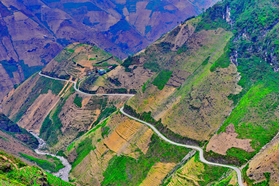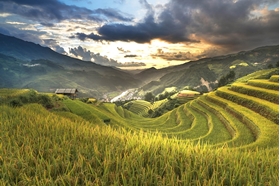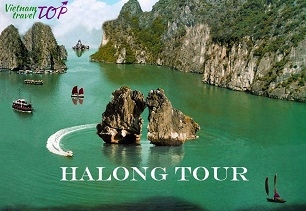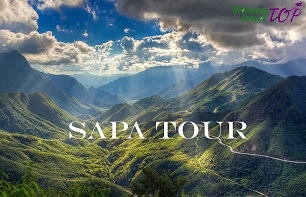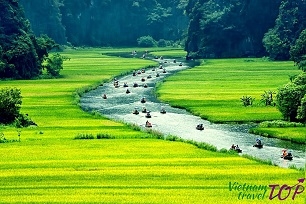Overview
Ha Giang town and state of the same name is in the northernmost part of Vietnam. It is remote but that is certainly part of its charm. Life has changed little over the decadeswith the many ethnic groups still retaining their individual languages and their own customs involving weddings religion, festivals or death. This Ha Giang travel guide suggests you attempt to see as many of the tribes as time allows.
In many ways it is the final frontier with a 270 km border with the Yunnan State of China. Vietnam’s capital Hanoi is 320 km to the south. It is a poor state with the mountainous terrain having minimal potential for agriculture except at levels below 800 metres and the central plateau which produces plums, peaches, soya beans, oranges and tea.
The highest peak is Tay Con Linh at just over 2,400 metres while the woods are a precious resource that also contain numerous plants with medicinal properties.
There are differences within the state. The south has rocky limestone and granitemountains with stunning peaks and rivers while in the west there is a sloping mountain side, high passes, valleys and springs. Elsewhere the land area is not so high with the Lo River Valley and Ha Chiang town.
The town was severely damaged during the struggle with China in 1979 but has been largely restored.
This is a remote state and as such here is a very outside chance of seeing a tiger but more chance of peacocks and pangolins.Vietnam travel can guarantee a great experience but sadly not the glimpse of the increasing rare tiger.
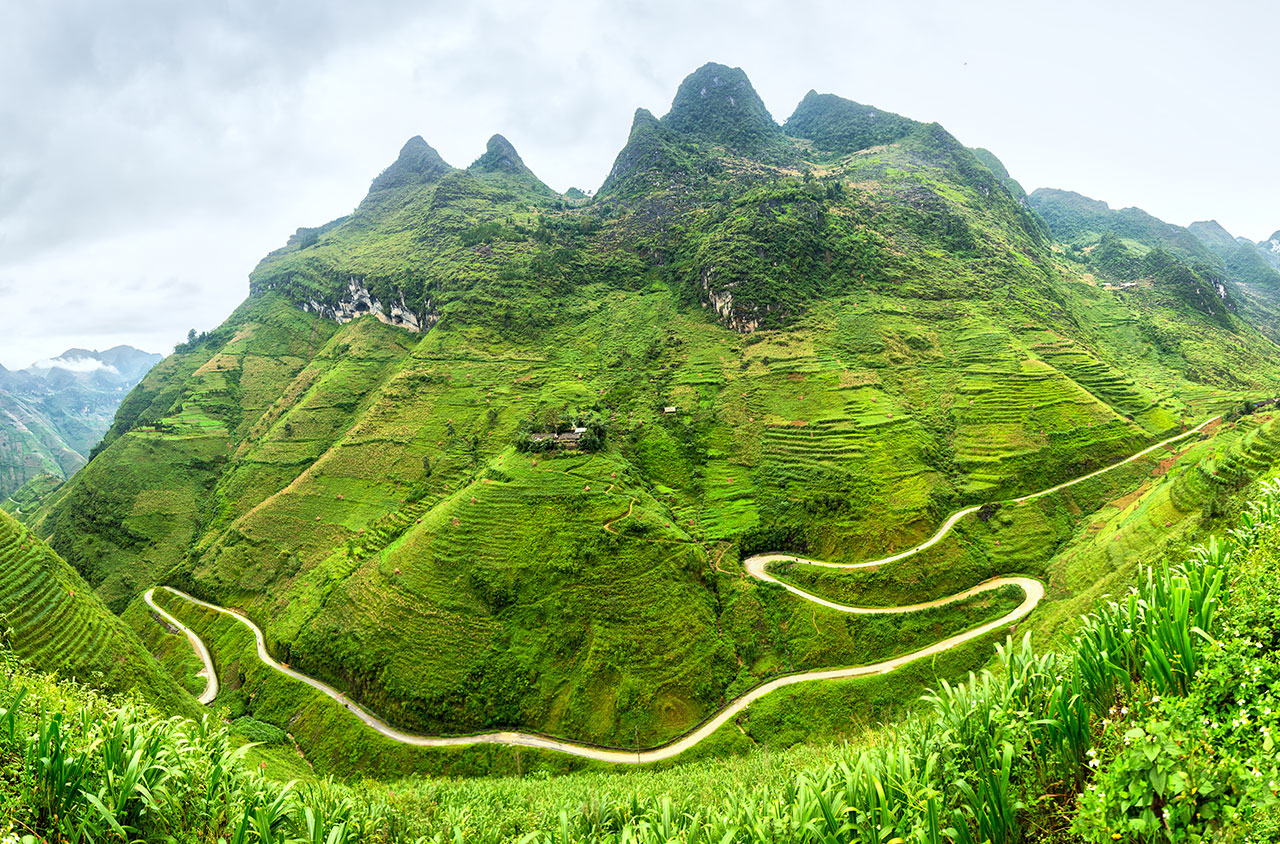
How to get there
The highway up to Ha Giang is in fairly good condition. It takes eight hours by bus but the journey is enjoyable by day with the interesting countryside en route. There is also an overnight option.
Should you wish to hire a car or minibus together with a driver that is a further alternative.Vietnam tour packages will do most of the hard work for you.
Another way to reach the town then travel on to the State’s many attractions is to take the train; there is an overnight train to Lao Chi 100 km west of Ha Chiang with a slow bus transfer to the town itself though you will see none of the countryside en route.
Best time to visit Ha Giang
There are two climatic seasons in Ha Giang with altitude being an additional factor to consider. The lower region in the south has a dry season between the middle of September and the end of May. Further north the rains start a month earlier. The average temperatures vary from 15C in January to 28C in the middle of the rains, July.
Climate is not everything. Lunar New Year is a great time to visit Ha Giang because of traditional customs involving such things as celebrating success or the rains. Stand back and watch the fun. Vietnam travel packages are available all year round incidentally.
Things to see and do
This State has much to offer and our Ha Giang travel guide will show you. There are plenty of things to see and do and anywhere you see a market you should stop for a while and take in the activity you are seeing.Vietnam private tours can be tailored to clients’ wishes and here are some suggestions to consider:
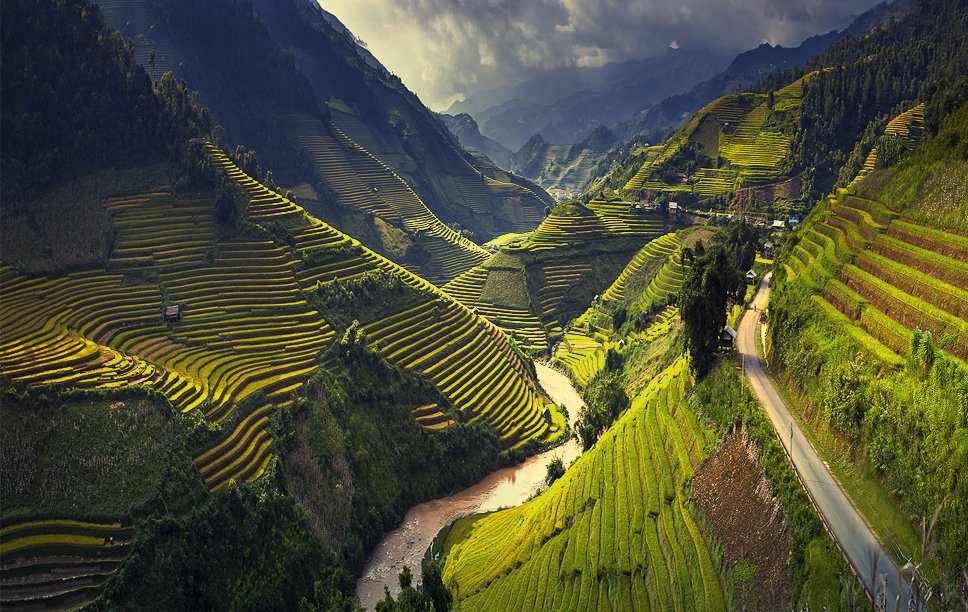
• Quan Ba Valley (‘’ Heaven’s Gate’’) is at 1.500 metres above sea level. There are caves and grottos, wonderful orchids and fruit trees. Phuong Thi?n Cave and Chui Cave are just 7 km from Hà Giang. Quan Ba is the opening to the Dong Van Plateau.
• Dong Van Plateau is one of 77 geological parks in the world recognised by UNESCO. It is close to the Chinese border and a great place for trekking and climbing.
• Vuong Palace dates back to the Qing Dynasty in China. It is almost 150 km from Ha Giang but if you have time to really explore the State then go to see it.
• Pho Bang is minutes from the Chinese border. It can be fairly cold at times because it sits at over 1,000 metres. Its market is fun and sells local produce such as plums and peaches as well as medicinal plants like anise and cinnamon.
• Khau Vau Love Marketis held near the mountain pass of Meo Vac either on the 26th or 27th of each lunar month. It is a place where young people go in search of a partner.
• Ma Phi Leng Pass is difficult to reach but the views during the journey and on arrival are truly spectacular.
• Do Thong dates back 30,000 years and archaeological excavations reveal it belonged to the Son Vi period having unearthed axe heads and tools which you can see both in the local museum at Hà Biang and the History Museum in Hanoi.
• Lung Cu in the Plateau is the very north of Vietnam. It is situated on Dragon Mountain where there is a watchtower modelled on the one in Hanoi.
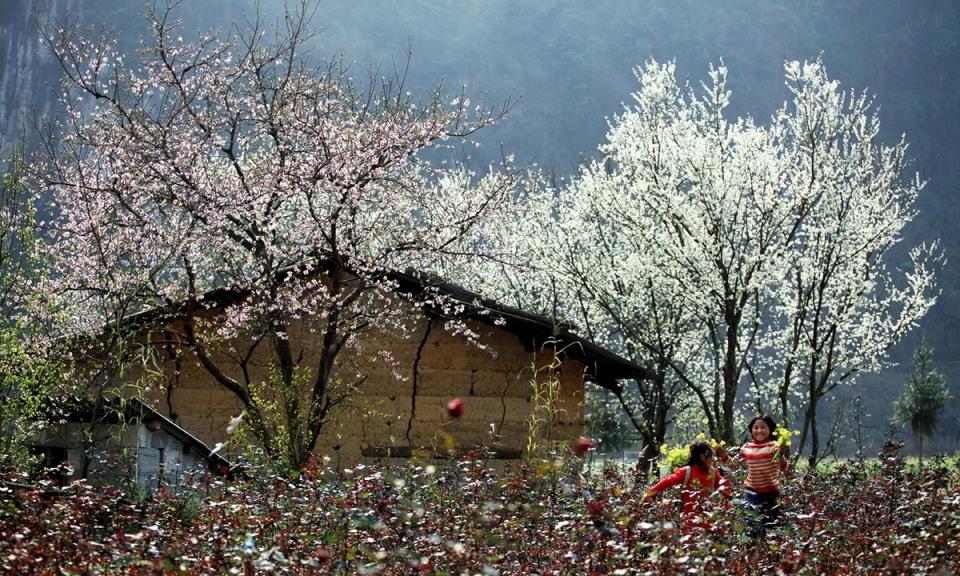
Accommodation
The very charm of Ha Giang is that it is remote so you cannot expect 5 star accommodation; adventurous travellers neither need nor expect it the vast majority of the time.
There are hotels available, notably the Huong Tra, a few kilometres out of town, which can organise tours and amongst their services are wi-fi, cable TV, a swimming pool and restaurant. Bong Hostel has 2 dormitory style rooms and a neighbouring cafe.
Other options to consider are Truong Xuan Resort and Huong Thao 2.
The other alternative is to stay in one of the homestay cottages in villages such as Thon Tha just 6 km from the town centre. What better way to get to understand local daily life? In many ways this is the best choice.
Travel tips
You need to understand that this area is fairly remote as Ha Giang travel guide has revealed from the start. It is certainly worth carrying some of life’s essentials with you and that includes a basic medical kit.There are problems getting around to see everything but that is part of what is a really memorable experience as this Ha Giang travel guide has attempted to demonstrate.





